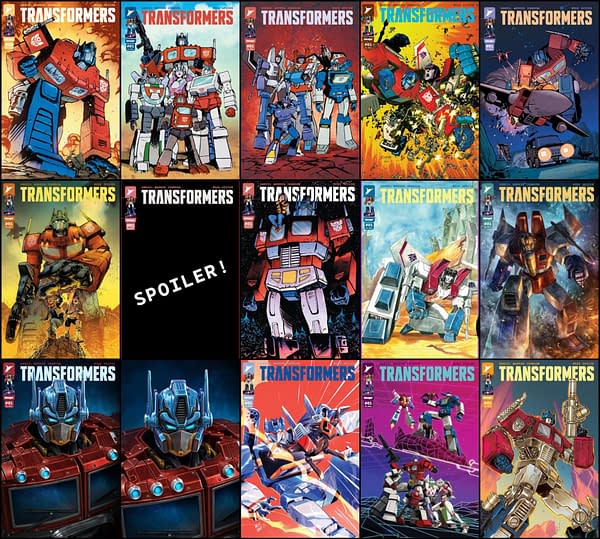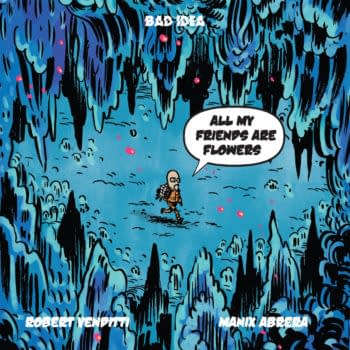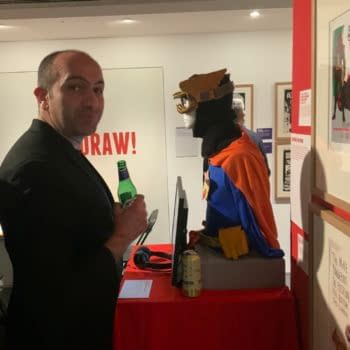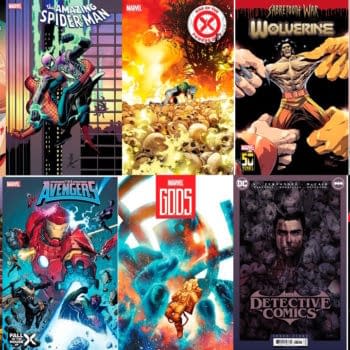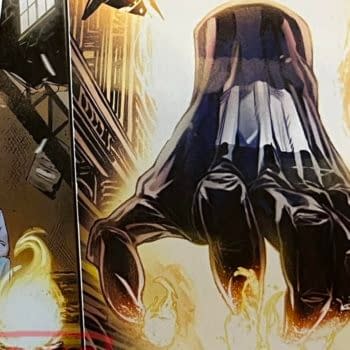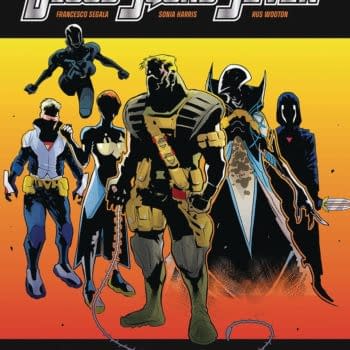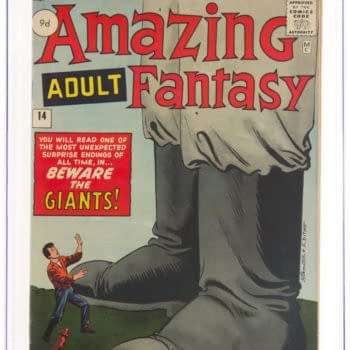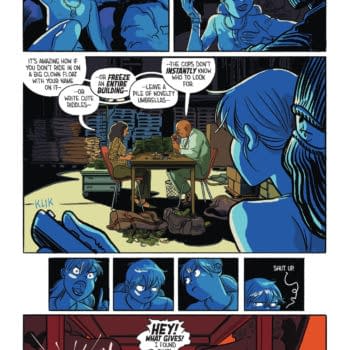Posted in: Boom, Comics, Comics Publishers, Current News, DC Comics, Dynamite, Image, Marvel Comics | Tagged: comic shop, Mystery Retailer
Mystery Retailer Talks Variant Covers & How Obama Was A Tipping Point
We welcome the return of Bleeding Cool's Mystery Retailer, this time, talking all about variant covers in today's comic book marketplace.
Article Summary
- Incentive variants harm small retailers and flood the market, diminishing their value.
- The Obama Amazing Spider-Man #583 variant caused a rethink on variant qualifications.
- Custom retailer and convention variants are lucrative but may be contributing to FOMO.
- There's a call for more focus on regular covers to retain the specialness of variants.
We welcome the return of Bleeding Cool's Mystery Retailer! Of late, we have been covering a lot of comic book retailers talking about the comic book industry right now with our Comic Retailers Say The Funniest Things articles. And yes, there is a big one coming tomorrow ovcer the recent kerfuffles. But first, a return to our Mystery Retailer who doesn't want to be named, "to give you honest opinions without fear of retribution." Last time, he talked about Phil Boyle's plans; this time, it's all about variant covers. Comic books that have multiple covers, some rarer than others, some only available if retailers go through a number of hoops, some exclusive to certain stores or shows, all to encourage collectability over content. Take it away, MR!
"Variant covers have flooded the direct market in recent years. I'll examine the different types of variants that exist, if they have a positive or negative impact on the direct market, where each type originated from (if possible,) and suggest ideas that may improve some challenges for the direct market."
I have to say, MR, they do give me more artwork to run in Bleeding Cool posts and more work for artists as well… but, okay, let's hear how it affects the comic book stores themselves.
"Firstly, let's talk about incentive variants. Incentive variants are comics with different cover artwork than the original and are sold to direct market retailers based on a specified ratio order of the regular cover. They can be combined with open-to-order (no restrictions) variants. The benchmarks to qualify were pretty innocent in the beginning. We had 1:10, 1:20 and 1:25 ratios, and retailers would expect to sell them to customers for a premium, which would rationalize ordering the qualifying quantities of the regular cover. You would expect about $1 for each qualifier number as a respectable return, meaning you order a 1:25 variant and sell it for $24.99. Perhaps publishers were being urged by retailers to incentivize even further because they started offering 1:50 and 1:100 ratios. As more and more retailers felt obligated to chase these quantities to qualify for these variants, the value of these variants began to fall. While the demand was still there, you would now expect to receive approximately half of your investment in return. This practice benefits only two groups: the publishers and the high-volume, high-return retailers. Many retailers were stuck with numerous unsold regular covers, which wasn't always the case before. For example, Marvel's relaunch of Star Wars #1 in 2015 saw six additional printings as quantities would repeatedly sell out. As publishers realized how successful this program had become, they would double down and take it further. This would birth the 1:200, 1:250. 1:500, 1:1000 and 1:2000 ratios. Many retailers would chase variants at huge risk to try and satisfy a small number of customers. This model still exists today and, in many cases, results in numerous unsold copies sitting in lower-volume stores. As we discussed in the first segment, this wasn't an issue for Discount Comic Book Service or Midtown Comics. Now, as fewer retailers cannot or are unwilling to match these numbers, the secondary prices for incentive covers have risen sharply. Since we routinely sometimes see double the ratio in the selling price, it is evident that there is much less supply and much more demand. My belief is this incentive based program should stop immediately. Detractors will argue that these stores made bad business decisions by ordering quantities they would never sell or say nobody forced them to attempt to qualify. However, I believe this program creates a sense of obligation, opportunity and a fear of missing out. My suggestion is to stop this program momentarily and reassess it at a later time."
Most retailers I know will change a lot for the high ratio covers to justify ordering so many of the regular covers to get it. If the price is high enough, won't it justify ordering more? Or is this a see-saw thing, switching between ordering too many and too few, month by month? MR continues…
"Secondly, we have open-to-order variants, meaning there is no qualifying quantity you have to meet to order these variant covers. There isn't a comic today from Marvel or DC which doesn't have at least one open-to-order variant cover. Open-to-order variants used to be order-based, but not in the sense of how incentive variants are. There were meet or exceed qualifiers to hit a percentage of a previous issue number or an entirely different title altogether. In layman's terms, you could order any desired quantity, but your regular cover orders must meet or exceed the quantity or percentage of a specified previously published comic. I believe this concept is better than the open-to-order concept, but it again hurts lower-volume retailers. I think it was the 2009 Amazing Spider-Man #583 (President Obama variant) when retailers first started questioning this program. What happened was this variant was under-ordered. Because this was a variant you had to qualify for, it was locked out in Diamond's ordering system and you could not place reorders. The demand for this variant from people who didn't collect comics was unbelievable. It quickly hit $100 overnight and left many retailers with nothing to supply the demand. This was also a time when Marvel and DC were actually still overprinting books, but his book was locked, so the overprint wouldn't have mattered anyway. I'm sure Marvel was inundated with complaints, which led to the cover being reprinted four times with different backgrounds and word bubble text. I ordered a large number of copies, which wasn't necessarily easy as I was selling at a much higher volume then, and it was harder to qualify. Something in my gut told me this book was going to be huge, so as popularity started to increase, I quickly placed multiple orders through Midtown Comics. At the time, Midtown had a cap of 25 copies through their online store. I placed as many orders as possible with their 15% off for all new releases. I believe this book may have been the catalyst to end the meet-or-exceed variant covers. Today, we have open-to-order variants, which I believe is also an issue. There are simply too many of them and they are no longer special. Marvel VP David Gabriel famously said that as long as retailers are ordering them, Marvel would continue to make them. The argument again will be that retailers can choose not to stock these variants, but there are customers who buy them and many want the ability to choose. DC would take an unusual approach. They decided that their open-to-order variants would have reduced trade dress, thicker glossy paper stock and an increase of $1 to the cover price. I was told by a reputable source that Dan DiDio said sales were great and his job was safe, which it turned out was not the case for either of them. Ultimately, I think these variants are excessive. I'm not sure stopping them altogether is the answer, but making them special or less frequent may certainly help. I definitely suggest that DC removes the $1 price difference, as I'm certain customers would appreciate it. Previous to these was the 50/50 variant. Basically, these variants didn't have their own order codes and you would receive equal quantities as the regular cover if ordered in even quantities."
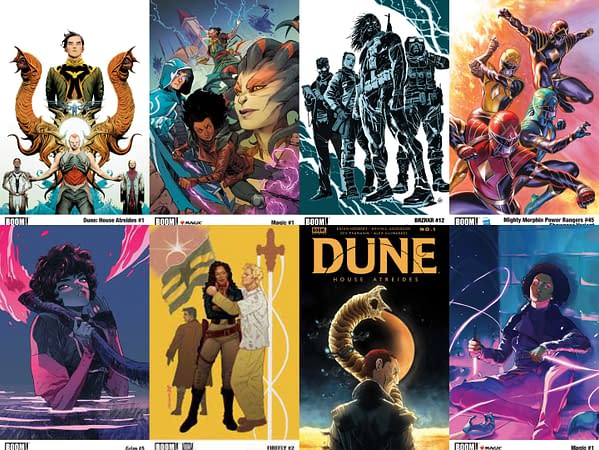
Former DC VP Sales Bob Wayne used to say that variant covers were wonderful in moderation. A sprinkling, a dash of flavour, without overwhelming the whole dish. But then he just his job at DC. And it does appear we are at a variant cover event horizon now. He wouldn't have allowed this. Sorry, MR, you were saying…
"Now there's also custom retailer variants or store exclusive variants. Basically, these are special variant covers at a flat cost with exclusive artwork for direct market retailers in limited quantities. Through Marvel and DC the quantities begin at 3000 copies with lower quantities for virgin, sketch or black & white covers. Most other publishers have much lower quantity requirements. This program originated in 2011 through IDW with Godzilla Kingdom of Monsters #1. This variant would feature your storefront being crushed by Godzilla. Marvel then did an Amazing Spider-man version featuring your store name. Dynamic Forces has also done a series of their own exclusive covers, which included a certificate of authenticity. These variant covers exploded in 2015 with the release of Star Wars #1 for Marvel. There were so many that a list was created so customers could keep track and collect them all. This spawned artists themselves doing their own exclusives they would sell directly to customers. Although these carried the price of the regular cover, they would be sold at a premium. Prices vary due to character, artist and storefront. They can price these variants from $20 to as high as $50. This program is highly lucrative for stores, especially those with an online presence. These variants can be in such high demand that there are stores which solely resell other store's exclusive variants. Obviously, there is high demand for them and I don't think there is an immediate danger for the direct market. We then had the emergence of collector subscription boxes. This started with Loot Crate, which would offer you exclusive variants, Funko Pops, keychains, T-shirts and other themed collectibles. This was a huge opportunity for Marvel and DC to not only sell an obscene amount of books, but also try and bring in a new audience of customers. While it was a great attempt, the comic book portion really didn't bring in new customers, and Funko Pops would really start to hit its stride. Stores would wholesale extras of these variants from Loot Crate and others, hoping to cash in on them, but the demand just wasn't there."
Every now and then, I forget that Loot Crate was a thing. How many copies of Bravest Warriors or Orphan Black comics died in vain?
"Lastly, we have convention-exclusive variants. These variants are also highly lucrative. These have the same requirements as store variants and, in many cases, are being sold by stores and creators on the convention floor. Publishers also have their own convention variants. For as long as I can remember, DC would sell through Graphitti Designs and Marvel had their own pop-up store at their booth. We also have Whatnot and other online exclusives with similar quantities and pricing. I'll be covering all aspects of speculators in its own segment, but convention exclusives are a major target for comic book flippers. Fear of missing out is almost the entire model and success of reselling these types of variants. Not only are you fighting against others on the convention floor, but those who can't attend scramble on eBay and other sites to pay high prices to obtain them. These convention exclusives are highly influenced and similar to the collector toy boom of 1994-1999 and collector toy convention exclusives starting in 2003. They will each be examined in their own segment and I will paint a picture of how they all connect."
Can't wait!
"I think we need more emphasis on the regular covers. As a kid, I would routinely pull comics I wanted based on character and/or the cover. I had no concept of who the creators were or what connected stories meant. If I had any consecutive issues of any run, it would have come from multi-packs(I had reprints of Star Wars #1-6 only because of these multi-packs). In the entire history of comics, every iconic cover has never been a variant cover. Again, I don't think variants need to stop. I think they need to be special. They need to be used sparingly. And let's put some of what attracted us to cover back into the regular covers."
Bring back Bob Wayne, all is forgiven?




